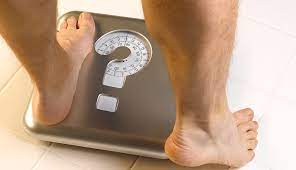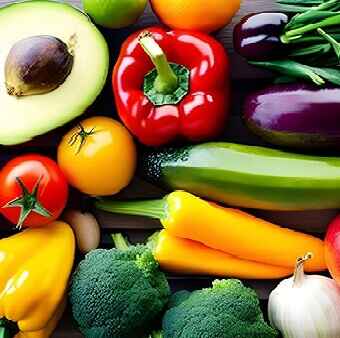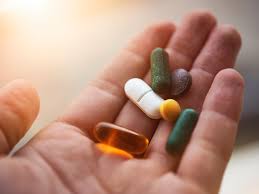Table of Contents
Introduction: Lifestyle Changes For Weight Loss
Losing weight is best achieved through small changes to your eating and physical activity habits. Some small lifestyle changes creating new, healthier routines will help with your weight loss journey.

Create process goals, such as walking 30 minutes every day, and outcome ones like losing 5% of your body weight. Doing this will give you a sense of progress and motivate you along the way.
1. Eat More Veggies
Eating more vegetables can make a significant contribution to your weight loss efforts. Not only are they low in calories, but high in water and fiber that keeps you feeling satiated for longer.
Vegetables are naturally low in sodium, helping you curb your cravings for salty foods and encourage you to eat fewer of them. Plus, veggies provide essential vitamins and minerals that support a strong immune system.
Eating more vegetables not only reduces your risk for developing certain diseases, but it can also provide energy, improve moods and strengthen immunity.
2. Eat Less Fat
If you want to shed pounds and keep them off, making lifestyle changes is necessary. These could include eating healthier foods, exercising more and maintaining consistent eating patterns over time.
Eating healthily also involves limiting your fat intake. Saturated fats (found in meats, dairy products and fried foods) can raise bad cholesterol levels in your bloodstream.
Maintaining a healthy intake of saturated and trans fats will not only aid in weight management, but it may reduce the risk for heart disease, cancer, stroke and diabetes as well.
Eating less fat can also increase feelings of satisfaction and fullness. Unsaturated fats (monounsaturated and polyunsaturated) found in fruits, vegetables, nuts, seeds, fatty fish, and plant-based oils help regulate blood sugar levels, combat fatigue and lower cholesterol levels.
3. Eat More Whole Grains
Contrary to refined grains, whole grains haven’t been stripped of three essential components of their kernel: bran, germ and endosperm.
These foods are more nutrient-rich and less likely to lead to health issues like diabetes, heart disease, cancer or weight gain. Furthermore, they contain fiber which helps keep you feeling full for longer periods of time and can help curb overeating.
Eating more whole grains is an easy way to add nutritional value and variety to your meals, such as breakfast and lunch. Try substituting your usual cereal for a whole-wheat version or add sprouted grain bread like Ezekiel to your morning plate for breakfast. For lunch, consider having either brown rice or quinoa salad for lunch – you won’t regret it!
4. Eat More Fruit
Fruit is an integral part of a nutritious diet, and eating more fruits can actually help you lose weight. This is because many fruits are low in calories and high in fiber, providing sustained energy sources that keep you feeling satiated for longer.
Eating a variety of fruits is beneficial, as each offers its own health advantages. Examples include antioxidants, vitamins, minerals and fiber that can contribute to your overall wellbeing.
Studies have demonstrated that eating at least 5 servings of fruit daily can reduce your risk for diseases like cancer and heart disease, as well as aid weight loss. It’s essential to note, however, that the amount of fruit recommended depends on your age, sexual preference, height, weight and physical activity level.
5. Eat Less Sugar
Eating too much sugar, particularly processed food sugar, can lead to weight gain and other serious health problems. Fortunately, cutting back on sugar consumption is easier than you might think!
By substituting sugar with complex carbs like fruits, veggies and whole grains, you can provide yourself with a sustained supply of energy that won’t leave you feeling fatigued or sluggish.
Furthermore, cutting back on sugar intake can lower your risk for heart disease, diabetes and cancer. Furthermore, eating fewer sweet treats may even assist in weight loss!
6. Eat More Lean Meat
Protein is an ideal way to shed pounds, as it helps you feel satiated for longer and increases metabolism. Furthermore, protein helps maintain lean muscle mass so you burn calories more efficiently during physical activity.
However, it’s essential to consume the correct amount of protein. Eating too much may lead to weight gain, so opt for lean meats that are high in protein but low in fat.
The USDA suggests that people eat no more than 95 milligrams of cholesterol and 10 grams of fat per 100 grams, and limit saturated fat to less than 10% of their daily calorie intake.
By opting for leaner meats, people can help themselves adhere to these guidelines and reduce the risk of heart disease and other chronic illnesses. Furthermore, studies have linked eating lean meats with a decreased cancer risk.
7. Eat More Seafood
Seafood can be an effective aid to weight loss, as it’s low in calories and packed with essential nutrients that promote healthy eating. Plus, its lean proteins keep you feeling full and satisfied so you won’t be tempted to snack on unhealthy items later.
Additionally, seafood may reduce the risk of chronic diseases like heart disease and cancer. Plus, it contains Vitamin D which lifts your spirits and gives you energy for longer.
Finally, ensure to choose seafood low in mercury. High-mercury fish such as tilefish, shark, king mackerel, marlin, swordfish and bigeye tuna should always be avoided when possible.
8. Eat More Fruit & Vegetables
Eating a variety of fruits and vegetables is beneficial for both your health and weight loss goals. They are low in calories and fat, plus packed with water and fiber that help you feel satiated.
Eating fruits and vegetables not only can you extend your life, but they may actually help you live longer. A recent study discovered that people who consumed two servings of fruit and three nonstarchy vegetables each day saw an 13% reduction in their risk for early death compared to those who didn’t consume those foods.
Add more veggies to your meals with fresh herbs and spices for an exciting flavor that’s easy to crave.
9. Eat Less Dairy
Dairy is one of the largest food groups, so cutting it out may seem like a good way to shed pounds. However, this approach may not work for everyone.
People with dairy sensitivity or allergies may experience digestive issues when consuming milk and other dairy products. This may manifest in symptoms such as bloating and gas.
If you are experiencing these symptoms, it may be beneficial to try a dairy-free diet for several weeks and see if they improve.
It is essential to read labels when purchasing food items such as energy bars, soups, salad dressings and flavored potato chips; many of which contain dairy. Furthermore, be mindful of hidden sources of dairy in your diet such as milk proteins.
10. Eat More Fruit & Vegetables with Nuts
If you’re trying to shed pounds, adding more fruit and vegetables with nuts is a great idea. Not only are these foods nutritious but they’ll also boost your energy levels and make you feel fuller for longer.
Furthermore, fruits and vegetables contain various nutrients and antioxidants that may lower your risk of disease.
A recent study from Eastern Carolina University suggests that eating plenty of fruits and vegetables may help combat stress. According to the journal Clinical Nutrition, those who consumed more fresh produce were less stressed than those who consumed fewer.



